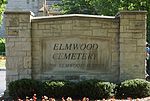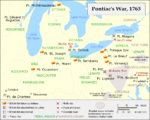Eastside Historic Cemetery District
Cemeteries on the National Register of Historic Places in MichiganHistoric districts in DetroitHistoric districts on the National Register of Historic Places in MichiganNRHP infobox with nocatNational Register of Historic Places in Detroit ... and 2 more
Tourist attractions in DetroitUse mdy dates from August 2023

The Eastside Historic Cemetery District is a historic district bounded by Elmwood Avenue, Mt. Elliott Avenue, Lafayette Street, and Waterloo Street in Detroit, Michigan. The district consists of three separate cemeteries: Mount Elliott Cemetery (Catholic, established 1841), Elmwood Cemetery (Protestant, established 1846), and the Lafayette Street Cemetery (Jewish, established 1850). The district was listed on the National Register of Historic Places in 1982.
Excerpt from the Wikipedia article Eastside Historic Cemetery District (License: CC BY-SA 3.0, Authors, Images).Eastside Historic Cemetery District
Mount Elliott Street, Detroit
Geographical coordinates (GPS) Address Nearby Places Show on map
Geographical coordinates (GPS)
| Latitude | Longitude |
|---|---|
| N 42.349722222222 ° | E -83.018055555556 ° |
Address
Mt Elliott / Kercheval (SB)
Mount Elliott Street
48211 Detroit
Michigan, United States
Open on Google Maps







